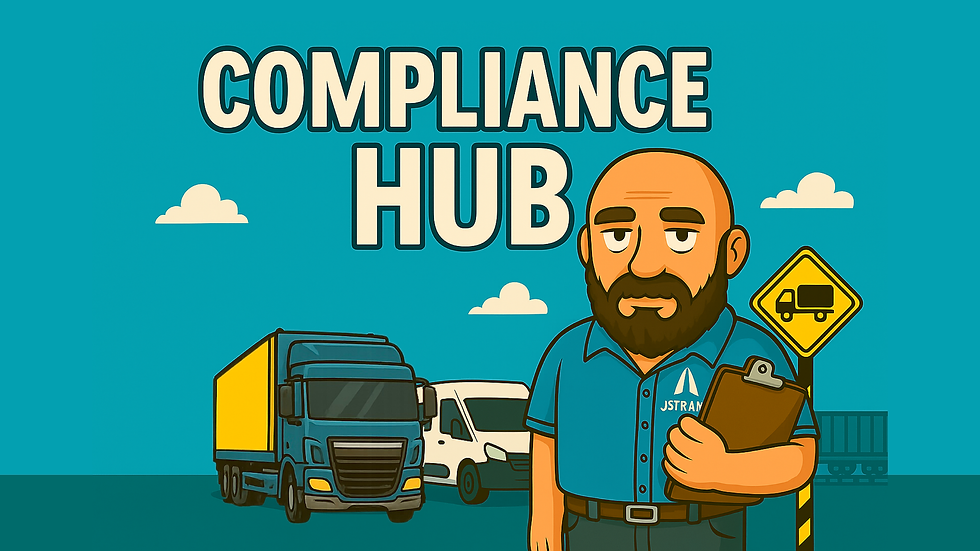The Hidden Risks of Bare Minimum Compliance in Road Transport
- stuart47304
- Jul 14
- 2 min read

Many small transport operators aim to do just enough to “tick the boxes” for compliance, especially when operating under a Restricted Operator Licence. While meeting minimum standards might seem cost-effective, this approach can hide significant risks that threaten your business’s survival and reputation.
In this post, we explore the hidden risks of bare minimum compliance — and why going beyond the minimum isn’t just safer, it’s smarter.
1. Increased Likelihood of Enforcement Action
Bare minimum compliance leaves little margin for error. One missed PMI, late record, or overlooked defect can trigger DVSA prohibitions or Traffic Commissioner investigations. Enforcement action often results in costly fines, vehicle downtime, or even licence revocation.
Why it happens: Minimum compliance means compliance is reactive, not proactive.
2. Higher Operational Disruption and Downtime
When issues are only addressed once they become problems, vehicles are more likely to break down unexpectedly, causing schedule disruptions, lost business, and urgent repair costs.
Why it happens: Without a robust maintenance regime, problems escalate.
3. Poor Driver Morale and Retention
Drivers expect safe, well-maintained vehicles and clear compliance policies. Bare minimum compliance can lead to frustration, accidents, and high staff turnover — all costly to replace and train.
Why it happens: Drivers feel unsupported and unsafe in poorly managed fleets.
4. Damaged Business Reputation
Clients and insurers value operators who demonstrate professionalism and reliability. Bare minimum compliance signals risk and unreliability, risking lost contracts and higher insurance premiums.
Why it happens: Compliance failures or prohibitions are public records and damage trust.
5. Financial Vulnerability
Hidden costs from fines, lost work, increased repairs, and higher insurance premiums accumulate fast, eroding tight margins. Operators running minimum compliance often face financial instability.
Why it happens: Lack of proactive planning leads to costly emergencies.
Why Going Beyond the Minimum Pays Off
Investing time and resources into comprehensive compliance systems:
Builds resilience and business continuity
Improves safety and driver satisfaction
Enhances reputation and client confidence
Reduces enforcement risk and associated costs
Final Thoughts
Bare minimum compliance is a risky gamble. For Restricted Licence holders, whose margins and resources may already be tight, the hidden costs can be devastating.
Aim to build systems that not only meet but exceed minimum standards — you’ll save money, avoid headaches, and protect your licence.
